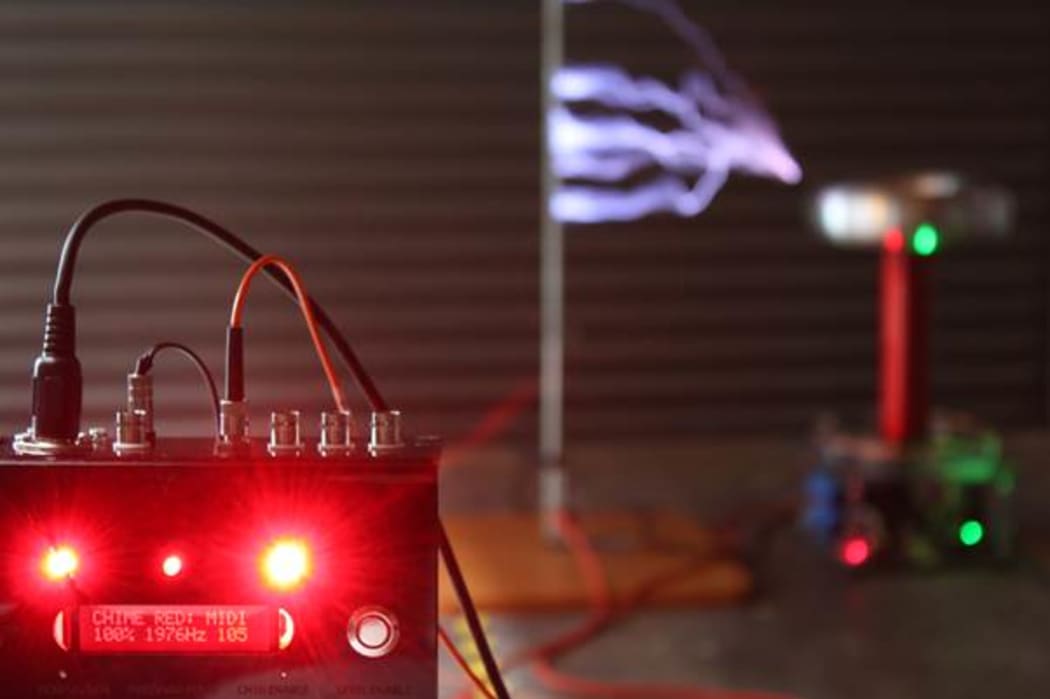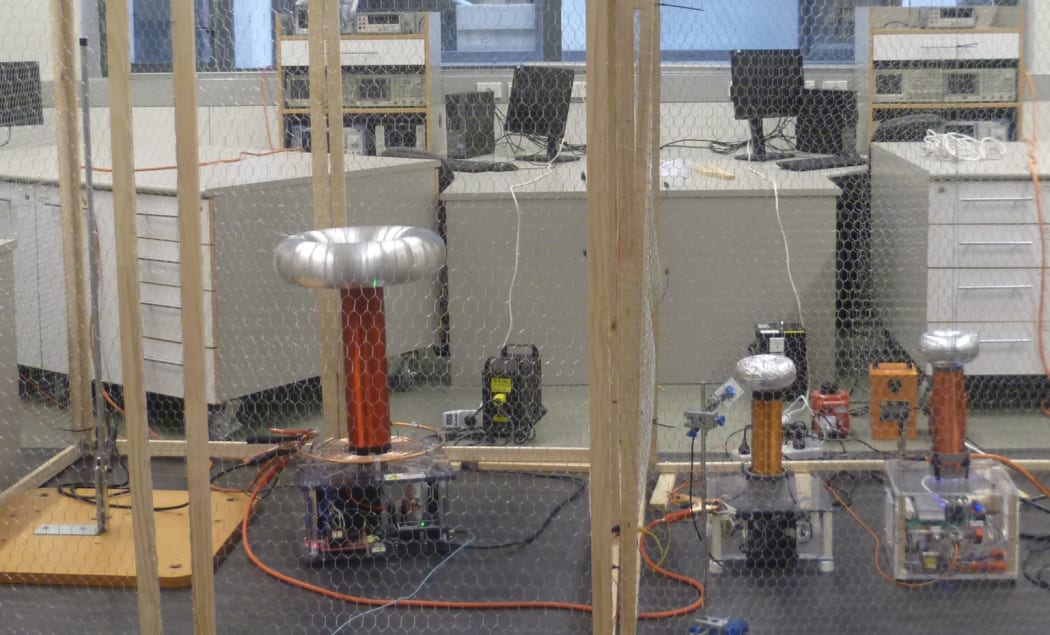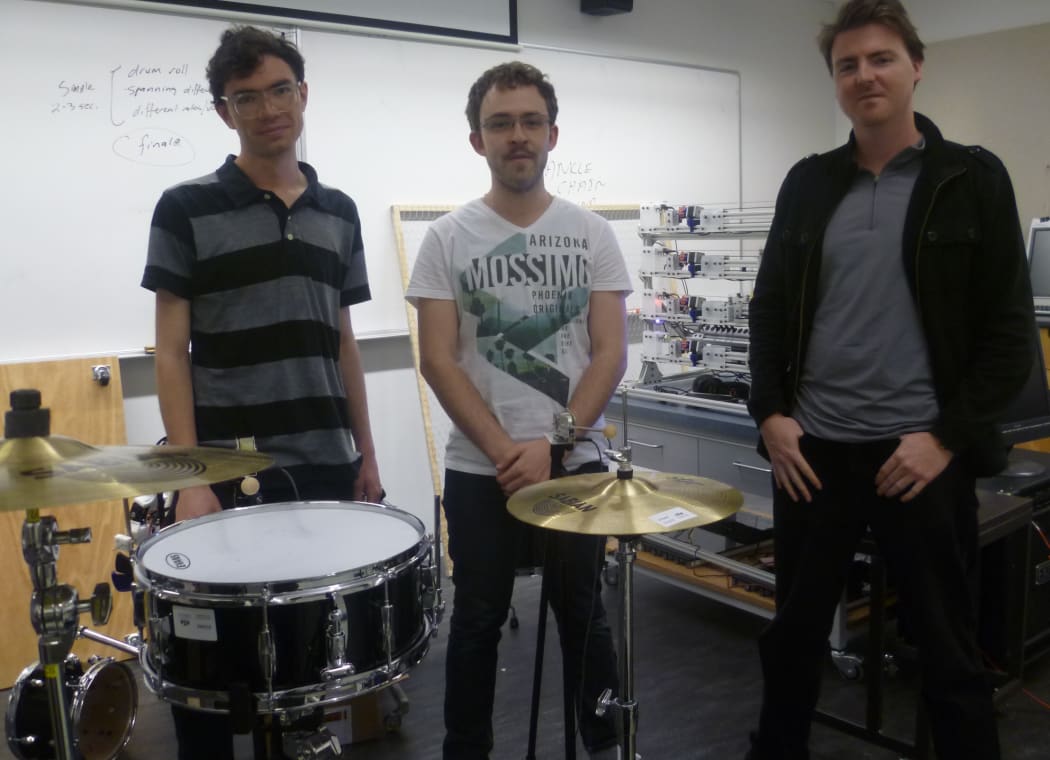By Alison Ballance
Dramatic arcs of lightning and piercing electronic sounds produced by a trio of Tesla coils, rapidly plucked bass guitar strings and a robotic drum kit came together in a unique musical performance called Chime Red this week.

The lightning arcs produced by the Tesla coils are controlled by the Chime Red box pictured in front. The faster the coil is fired, the higher the pitch of the resulting sound. Photo: Victoria University of Wellington
Chime Red took its name of a control system developed by software engineer Josh Bailey, who owns several Tesla coils and wrote the software, and electrical engineer James McVay at Victoria University of Wellington, who developed the hardware. The Chime Red system controls the Tesla coils, and allows the ‘lightning arc’ produced by each coil to produce 16 notes simultaneously, meaning the composers had 48 notes to work with.
Chime Red was a collaboration between the School of Electrical Engineering and Computer Science and the School of Music at Victoria University of Wellington. Jason Long is a PhD student at the School of Music, and he composed a number of pieces for the performance. Other works were composed by Jack Hooker and Jim Murphy.
“What’s really cool about writing music for all these things is that we can use regular music software on our computers and interface with all these,” says Jim Murphy. “I think that’s really the big accomplishment with all this, creating these interfaces that let us use regular tools to create for this strange new technology.”

The Chime Red performance uses three Tesla coils, which produce high voltage electrical arcs. To minimise the leakage of these and ensure audience safety the coils are contained in a Faraday cage. Photo: RNZ / Alison Ballance
James McVay developed MechBass, the robotic bass guitar, as an Honours project two years ago, when it became something of a YouTube hit. It has four strings that are plucked by a set of guitar picks, and can play faster than a human bass player, producing up to 80 notes a second if all four strings are being used.
“The Tesla coils are quite ear piercing,” says Jason Long, “And don’t have a lot of low frequency content, so using the MechBass bass guitar with them fills out the spectrum and gives quite a big sound. And the drums? Well, I like drums, and I wanted to write music for drums, bass and three Tesla coils!”
Tesla coils were developed by the eccentric and brilliant Serbian-American inventor Nikola Tesla in 1891. Tesla, who invented AC or alternating current, was involved in a well-known feud – the War of Currents - with inventor Thomas Edison who came up with DC or Direct Current. Tesla coils produce very large amounts of electrical charge, and were the first way of wirelessly transmitting electricity.

Jim Murphy (left), James McVay (centre) and Jason Long (right) standing behind the robotic drum kit. The MechBass robotic bass guitar is at the back, between James and Jason. Photo: RNZ / Alison Ballance

